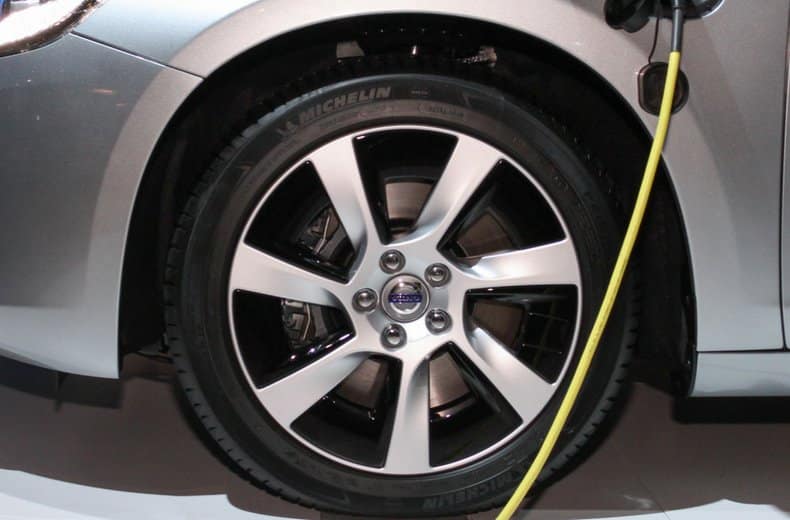It does not, however, have an infinite future in its current guise because it remains largely reliant on non-renewable fossil fuels.
An unsustainable model that has fluctuating fuel prices.
The government is also under constant pressure to find cleaner ways of fuelling cars and in doing so has pledged to ban the sale of new petrol and diesel vehicles.
Because of this, many fuels of the future are being proposed to take over from today's crude oil-fuelled engines, all of which have one thing in common – the ability to not be reliant on non-renewable fuels.
Here are the nine fuels of the future that could be powering your car in decades to come.
1. Biofuel
Biofuels such as bioethanol (which can be used instead of petrol), are made from corn and sugarcane, whereas biodiesel is made from vegetable oils and animal fats.
Both replace non-renewable crude oil-derived fuels.
The best types are second generation biofuels which are produced from sustainable sources rather than those grown for food.
Many consider them the best medium term solution to sustainable fuels
2. Electricity

Electric cars are vehicles powered by electricity instead of traditional gasoline or diesel.
They use electric motors and batteries to operate, offering a cleaner alternative to conventional vehicles. With zero tailpipe emissions, electric cars help reduce air pollution and dependence on fossil fuels.
EVs are often seen as a solution to combat climate change, with many countries offering incentives for their adoption.
As battery technology advances, electric cars are becoming more affordable, efficient, and practical for everyday use.

Cheaper than AA or we’ll beat by 20%^
• Roadside cover from £5.49 a month*
• We get to most breakdowns in 60 mins or less
• Our patrols fix 4/5 breakdowns on the spot

3. Steam
Steam cars have been around since the 19th century and were replaced by models with internal combustion engines.
Some say they could now repay the favour.
They are 'external combustion engines' where the fuel is combusted away from the engine, helping lower emissions.
There are several concepts for modern high-power steam engines in cars.
4. Kinetic

Many electric cars (and growing numbers of internal combustion engine cars) have brake energy regeneration systems, that convert energy normally wasted during braking into electric energy.
Utilisation of such systems is expected to increase in the future, to better harness the moving energy possessed by a car, and thus use less fuel overall.
If you are looking for a cheaper solution to your current car than why not consider trading in for a more economical runner at RAC Cars?
5. Heat

Two-thirds of the energy generated by petrol or diesel is wasted as heat.
Thermoelectric technology, which converts heat into electricity, can help reduce this and is already under development by several car makers.
One solution is to use thermoelectric panels to convert waste exhaust pipe heat into electricity, which can cut fuel consumption.
- Electric cars – a definitive guide and buyers' guide
- Should I get a hybrid, plug-in hybrid or electric car?
- The reduced plug-in car grant – which cars qualify?
- Exhaust repair
6. Hydrogen
Hydrogen can be used instead of fossil fuels in combustion engines. Hydrogen cars give out no harmful tailpipe emissions, only water.
Critics point out it transfers energy consumption away to the plant that makes the hydrogen, and there is currently no hydrogen refuel infrastructure in place.
Hydrogen can also be used to power a fuel cell and produce electricity.
This is the solution many consider to be one of the best longer-term energy sources for cars: it produces zero emissions and overcomes the limitations of onboard batteries.
Currently, however, fuel cell technology remains too expensive.
7. Air
Compressed air can replace petrol in a combustion engine to drive the pistons and produce power.
Stored in 4500psi tanks, air as an energy source is much less energy-dense but does produce zero tailpipe emissions.
Several concepts have been mooted over the years and some car makers such as Tata have even proposed mainstream air-powered cars.
8. Nitrogen

Liquid nitrogen stored in a pressurised tank can be heated to produce high-pressure gas. This can be used to drive a piston or rotary engine.
Liquid nitrogen is, however, a less efficient energy carrier than fossil fuels, and still requires electricity to produce it.
9. LPG

LPG stands for liquefied petroleum gas and is a type of 'liquid gas' that can be used as fuel for a variety of purposes, including powering cars.
While traditionally it was deliberately burnt off and wasted, it’s now recognised as a versatile low-carbon fuel – and used productively.
Although LPG is widely used by homes and business, less than one percent of cars on UK roads are fuelled by it.
Did you know, you can get fined for moving out of the way of an ambulance?
Want more useful content like this sent straight to your inbox?

Cheaper than AA or we’ll beat by 20%^
• Roadside cover from £5.49 a month*
• We get to most breakdowns in 60 mins or less
• Our patrols fix 4/5 breakdowns on the spot











